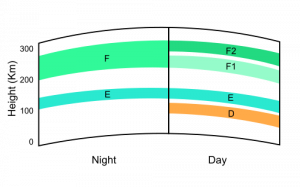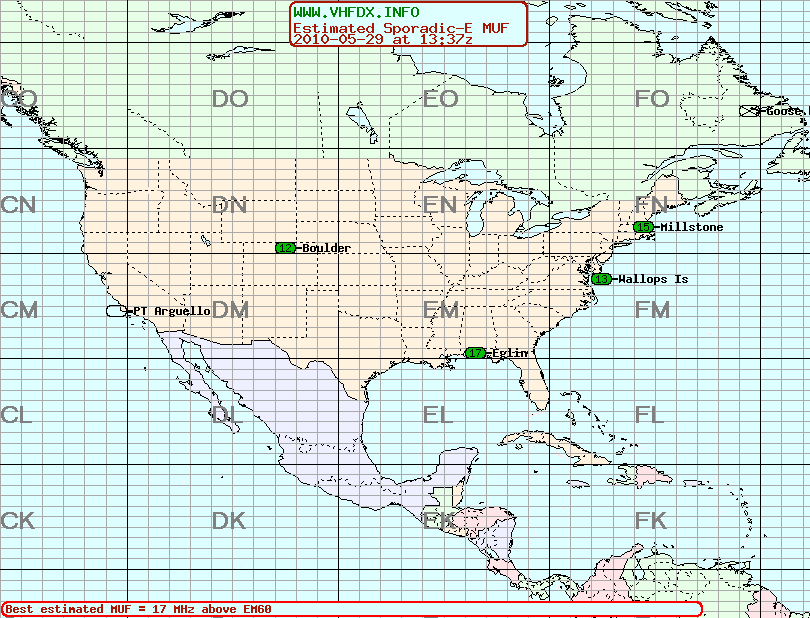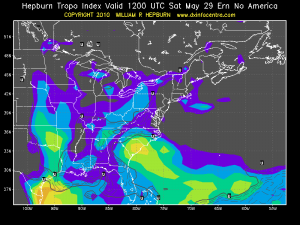While the FM frequency band (88 to 108 mHz) is mostly line of sight, there are things that cause long-distance reception hundreds or sometimes even thousands of miles from the transmitter. For a radio engineer, this can lead to all sorts of problems. Some are serious like STL cutouts, and some are quite funny, such as the general manager panicking when several new stations suddenly pop up in town. One of the many jobs of a broadcast engineer is to avoid problems and fix them if they show up (preferably the former).
The first and most common of these phenomena is Tropospheric ducting. This happens in warmer weather when there is a high-pressure system nearby and is more prevalent over flat terrain. What happens is a warmer layer forms in the atmosphere above a cool layer. That is why it is also known as “temperature inversion.” This causes a higher refractive index, which means that normally the signal would carry on out into space, however, upon encountering this warm layer it is bent back to Earth. It can last a few minutes to several hours. It affects all frequencies but is most prevalent above 100 mHz.
In some more severe cases, FM stations can travel 500 or more miles and override the local station’s transmitter site 15 miles away. In the age of digital STLs, co-channel, and adjacent channel interference can cause the STL receiver to unlock and mute. Analog STLs will become hissy or drop out altogether. It can be a big problem.
Unfortunately, not a lot can be done about main channel interference. It will go away eventually, and no, the station causing the interference is not operating illegally or any other thing. One consolation, if the duct is open in one direction, it is also open in the other, so say hello to all your new temporary listeners in East Podunk.
As far as STL paths go, the best defense is to have a good strong signal at the receive site. Boosting the signal with a preamp at the back of the STL receiver will not do anything. Larger, higher gain antennas at the transmit and receive will help, and more transmitter power will help. Sometimes diversity receiving antennas will help because at the 950 frequencies, 100 feet or so of altitude may make all the difference. Other than that, things like a backup RPU path using a lower frequency, a backup T-1, a backup ISDN line, a Comrex Matrix, basically anything to restore programming.
There is a tropospheric ducting prediction site called Worldwide Tropospheric Ducting Forecasts. They produce daily maps and predictions based on weather patterns.

The next propagation type known to abnormally affect VHF frequencies is called Sporadic E or E skip. This happens went ionized particles appear in the E layer of the ionosphere and it is more prevalent during the high period of the sunspot cycle when the atmosphere is unsettled due to solar storms. It is more likely to affect frequencies below 125 mHz, so main channel interference may be noted, but STLs and other broadcast auxiliary services will not likely see any effects.
This can happen any time of the year in any terrain and in any weather condition although it seems to be more prevalent in summer and for some unknown reason, around Christmas.
Ionospheric propagation is also known as skywave and is responsible for long-distance communications in the MF (AM broadcast band) and HF (Shortwave broadcast band).
During sunlit periods, the Ionosphere breaks down into several layers; the D layer, which is responsible for the absorption of AM signals during the daytime. The E layer, which normally reflects signals less than 10 MHz. The F1 and F2 layers, which primarily affect HF and lower VHF, from 10 – 40 MHz or so.
During sporadic E events, the E layer becomes heavily ionized in specific small thin areas, sometimes called clouds. This can last a few minutes or up to several hours. The effect is normally more pronounced with lower frequencies.
In this internet age, there is, of course, a website that can predict or at least define sporadic E, DXMaps.com has maps similar to the tropospheric ducting maps above.

Occasionally, solar storms will affect communications on all frequencies. The last time I heard this was in the last sunspot peak around 2000 or so. I was listening to the radio and all the stations faded for several seconds. It turns out a huge solar flare had erupted and sent a stream of particles through the Earth’s atmosphere. I happened to be driving down the road and immediately my cell phone started ringing. Listening to the panicked program director on the other end, you’ve thought the earth has stopped spinning on its axis. Anyway, it does happen once in a while.

